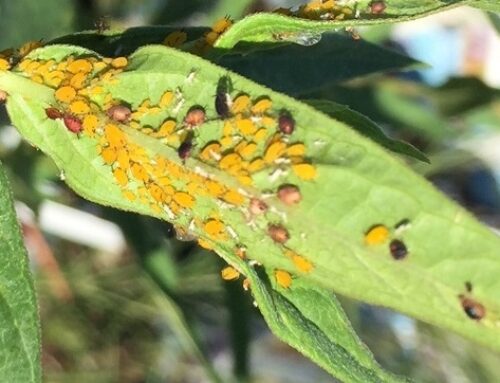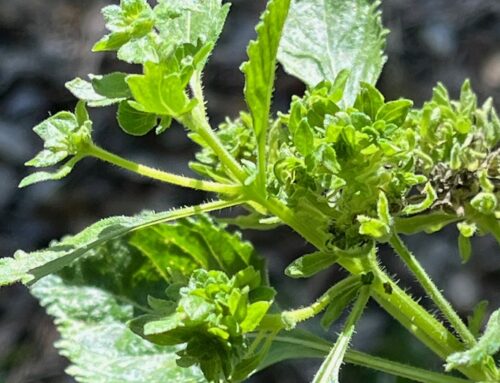Trichogramma wasps, despite their small size, are efficient destroyers of eggs of armyworms, bagworms, peach borers, squash borers, cutworms, tomato hornworms, cabbage loopers, walnut caterpillars and other leaf-eating caterpillars. The female wasp deposits an egg into the egg of the pest species. After consuming the contents of the host egg, the adult wasp emerges within about a week. During the female wasp’s 9-11 day lifespan, she will seek out and destroy about 100 pest eggs by laying her egg inside of it.
Release should be timed when the pest moth species is first observed. The Trichogramma wasps come shipped as “immatures” inside “host” moth eggs that have been glued to a strip of paper. There are approximately 25,000 per strip. Release rate should be about 10,000 per acre on residential or 100,000 per acre for orchards. There are enough Trichogramma wasp eggs on one strip to treat 25 Pecan trees. A suggested release schedule is 50% of the total rate the first week, then 25% each on 2 bi-weekly schedules.
Keep the cards in a warm, humid place out of direct sunlight in a clear, closed container. Watch carefully over a one week period, and when most of the adults seem to have emerged it is time to put the cards out into the target area. You can cut or tear the strips into 1” pieces for easier distribution ahead of time. Take the closed container to the target area and don’t open it until you are under the trees targeted. You can pin each square to the tree, or run a thread through the card with a needle and hang it on the target plant with the thread. The emerging wasps will have the best chance of finding and parasitizing eggs when the weather is moderate. The best time to release is early morning or evening when the sun will not hit the cards. Try to locate the cards with the prevailing winds blowing towards the target plant. Then let the wasps do their work!




